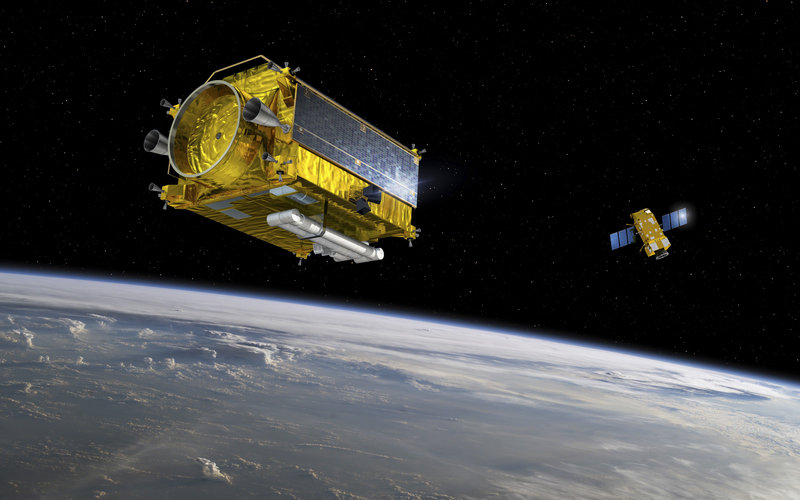ecodesign
A common eco-design framework will be established for the European space sector, including the development of tools and systems to evaluate the environmental impact and legislation compliance of programmes.
Past, present and future examples of legislation impacting the space industry include the Montreal Protocol on Substances that Deplete the Ozone Layer, the European Commission’s Restriction of Hazardous Substances (RoHS) directive and the Registration, Evaluation, Authorisation and Restriction of Chemicals (REACH) regulation – all placing restrictions on particular substances used in space programmes.
The information gathered from the monitoring and evaluation of legislation compliance will be used in the first step of assessing a candidate green technology to facilitate the development of alternatives to a material under question.
In addition, an environmental impacts will be assessed for each space project, evaluating the possible positive or negative impacts that a project may have on the environment. Its purpose is to ensure that decision makers consider environmental impacts when deciding to proceed with a project.
Several aspects can be considered when assessing environmental impacts: within the space sector the term is often associated with toxicity impacts while in the mass media the link is made with carbon footprints.
In reality an important and complex list of impact categories can be analysed, including issues such as:
- Climate change
- Ozone depletion
- Resources depletion
- Toxicity, both human and environmental
- Water use
- Land use
Each category has its own importance and a product might have a limited impact in one category and a significantly impact in another, making it difficult to clearly state a product is in absolute terms ‘better’ than another. Another difficulty is in quantifying impacts due to interactions between emissions and complex systems such as atmosphere, nature, flora, fauna and human systems.
Life Cycle Assessment
In past years there has been an attempt to reach consensus on evaluation methods, for instance through the work of the Intergovernmental Panel on Climate Change (IPCC). The European Commission’s Joint Research Centre has produced a standardised ISO-certified method and management tool called the Life Cycle Assessment (LCA), and it is widely considered that this tool is the most appropriate to evaluate the environmental impact of industrial activities.
A LCA quantifies and assesses the emissions, resources consumed and pressures on human health and the environment that can be attributed to different goods and services throughout their life cycle. It seeks to quantify all physical exchanges with the environment, sometimes termed the ‘cradle to grave’ method. The key aim is to avoid burden shifting – meaning to avoid that minimising impacts at one stage of the life cycle leads to larger increases elsewhere.
In the context of Clean Space, the plan is to establish a common framework to be used by European space agencies and industry when performing spacecraft design, including dedicated databases and tools for space activities. This framework will also allow the quantification of potential benefits of new technologies.
A preliminary version of the LCA tool is currently being implemented in some mission studies undertaken by the Concurrent Design Facility at ESA’s technical centre ESTEC in Noordwijk, the Netherlands. Preliminary LCA studies are being undertaken on launchers and some satellites. In the coming years, LCA studies on propellants, power and thermal control subsystems, manufacturing processes and ground testing will be carried out. Detailed studies are also planned to take into account the physical and chemical effects of rocket launches on the environment, particularly the effects of their exhaust on stratospheric ozone.
Benefits of being green
Complying with the most stringent of environmental legislations and doing so before they are enforced adds up to a smart move: it not only enables the early mitigation of potential supply chain disruption but also places Europe in a position to help shape and comply with future legislation in this area.
The identification of environmental hotspots will facilitate the selection of technology developments that have the potential to reduce European space programmes' environmental impacts and - most importantly - help to reduce waste, energy consumption and the use of hazardous materials that require costly safety procedures, in the process placing Europe at a competitive advantage.









